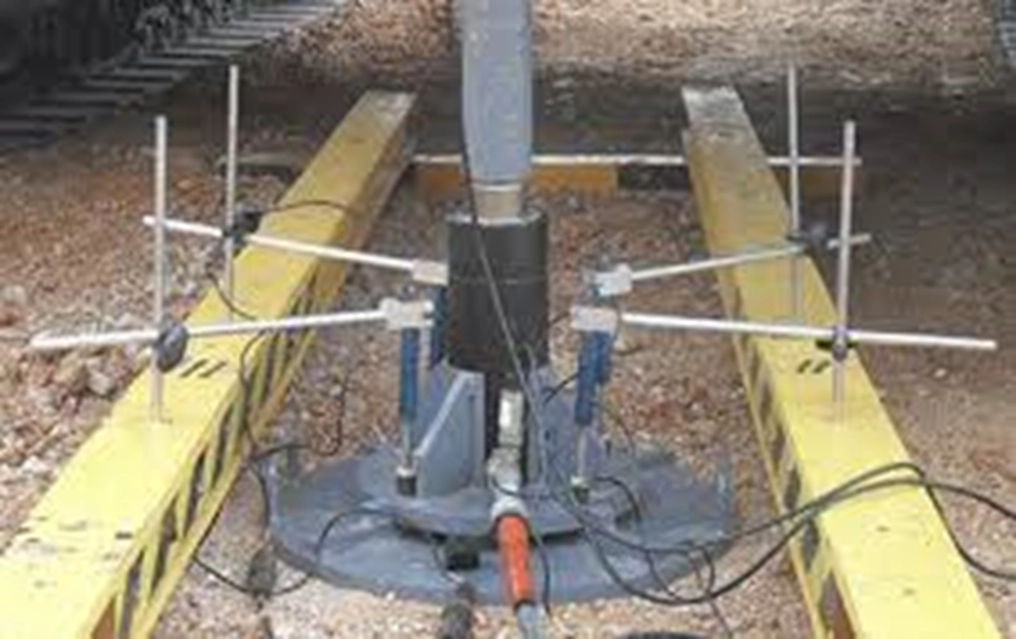Plate Load Test

A plate load test is a field test used to determine the ultimate bearing capacity of soil and its settlement under a given load. This test is commonly used for designing shallow foundations, raft foundations, and pavements. It involves applying increasing loads to a steel plate placed on the ground surface or in a pit, while monitoring the resulting settlement.
Procedure:
- Plate Placement: A rigid steel plate (typically circular or square) is placed on the ground surface or in a prepared pit at the desired depth.
- Load Application: Load is applied gradually and incrementally to the plate.
- Settlement Measurement: The settlement (or deformation) of the plate is recorded at each load increment.
- Data Analysis: The load-settlement data is plotted to determine the ultimate bearing capacity of the soil, which is the load at which the settlement increases rapidly. This value is then divided by a safety factor to determine the safe bearing capacity.
Purpose:
- Determining Soil Bearing Capacity: The test provides a direct measurement of how much load the soil can support before it starts to fail.
- Predicting Settlement: It helps estimate the settlement (or deformation) of the foundation or pavement under a given load.
- Foundation Design: The results are used in the design of shallow foundations, such as footings and rafts, by ensuring they can support the expected loads without excessive settlement.
- Pavement Design: It's also used in the design of pavements to determine the required thickness to prevent excessive settlement under traffic loads.
Advantages:
- Field Test: The test is conducted directly on-site, providing a real-world assessment of the soil's bearing capacity.
- Direct Measurement: It provides a direct measurement of the soil's bearing capacity and settlement characteristics.
- Applicable to Various Soil Types: It can be used to test a wide range of soil types.
- Quick and Cost-Effective: The test is relatively quick and cost-effective to perform.
Limitations:
- Limited Depth of Influence: The test primarily provides information about the soil's bearing capacity within a limited depth (typically twice the diameter of the plate).
- Not Suitable for Deep Foundations: It is not suitable for testing the bearing capacity of soil at significant depths, as it only reflects the soil's behavior within the tested depth.
